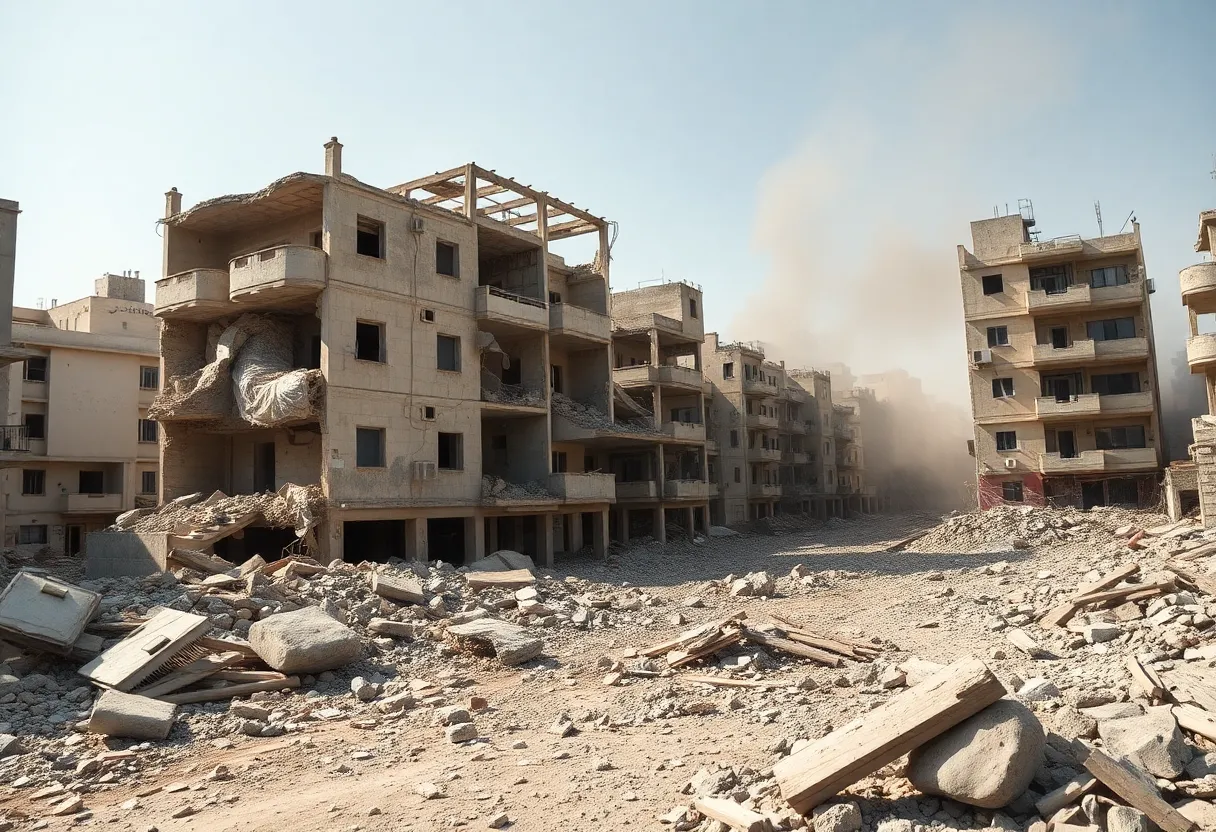News Summary
In Gaza, the destruction from military actions has left behind debris containing hazardous asbestos, raising serious health concerns for residents. With 92% of housing units collapsed, experts warn of the risks associated with airborne asbestos dust. Many residents are experiencing worsening health conditions, including respiratory issues, due to exposure to toxic materials. The local healthcare system is overwhelmed, and immediate action is needed to address this growing health crisis.
Asbestos Dust: A Looming Health Crisis in Gaza
In the aftermath of ongoing destruction, the people of Gaza are navigating a new threat – asbestos exposure lurking within the rubble of their bombed homes. A recent surge in military action has led to the collapse of an estimated 92 percent of housing units, turning once stable structures into hazardous debris laden with harmful materials, including asbestos fibers.
The Danger of Airborne Asbestos
Health officials in Gaza are raising alarms as debris removal efforts progress. The airborne dust generated from the wreckage of demolished buildings poses serious health risks that compound the dire circumstances faced by residents. The United Nations has warned that the volume of debris across Gaza is approximately 39 million tons, and much of it potentially contains asbestos—a substance banned in over 55 countries due to its carcinogenic properties. As the debris is disturbed, people may be unknowingly inhaling hazardous materials.
Medical professionals are particularly concerned about the long-term effects of continuous exposure to polluted air. The inhalation of asbestos fibers can lead to chronic respiratory conditions, including life-threatening diseases such as mesothelioma, asbestosis, and other forms of lung cancer. These illnesses result from inflammation and damage to lung tissues, with many residents unaware of the looming health crisis surrounding them.
The Struggles of Everyday Life
Amidst the ruins, residents like Widad al-Soutari fear not just for their safety, but for their future health. Living among the remnants of her former home, she reflects on the dual trauma of loss and health hazards posed by damaged buildings. Others share similar sentiments; many complain of breathing difficulties, with chronic conditions aggravated by the contaminated air.
In neighborhoods such as Sheikh Radwan, residents are paralyzed by anxiety over potential health consequences. One woman, suffering from asthma, experiences worsening symptoms every day as her environment remains choked with toxic dust from collapsed structures. It has become increasingly difficult for her family to breathe clean air, and despite their attempts to close windows and keep debris out, the fine particles seep inside.
Healthcare in Crisis
As the local healthcare system teeters on the brink of collapse due to constant bombardment and inadequate resources, medical professionals express growing concern about an impending influx of asbestos-related health issues. Treatments for these conditions can be complex and are often financially out of reach for many in Gaza, where daily survival is a constant struggle.
The use of asbestos for roofing in many homes exacerbates the situation, creating a dangerous juxtaposition of shelter and health risk. Living in makeshift accommodations, some residents find themselves unable to escape the environmental threats posed by the very structures intended to protect them from the elements.
A Call for Comprehensive Action
The urgent need for effective health and environmental intervention cannot be overstated. Medical professionals advocate for measures that may temporarily mitigate exposure, such as wearing protective masks and avoiding heavily polluted areas, but these solutions are not sustainable in the face of a growing health crisis. Without comprehensive support and intervention strategies, the future health of Gaza’s residents remains in jeopardy.
As the community grapples with the ongoing fallout from the conflict, including the hidden perils of asbestos exposure, the path to recovery seems more daunting than ever. The call to action for both local authorities and international organizations is clear: immediate steps must be taken to protect residents and address the profound health risks associated with the ongoing devastation.
Deeper Dive: News & Info About This Topic
HERE Resources
Asbestos Risks Soar Amid Ongoing Conflict in Israel
Additional Resources
- Al Jazeera: Asbestos Exposure in Gaza
- Wikipedia: Asbestos
- The Nation: Health Crisis from Gaza Rubble
- Google Search: Asbestos Exposure in Gaza
- Global Construction Review: Asbestos Levels in Gaza
- Google Scholar: Asbestos and Health Effects
- Associated Press: Gaza’s Health Crisis
- Encyclopedia Britannica: Asbestos



















